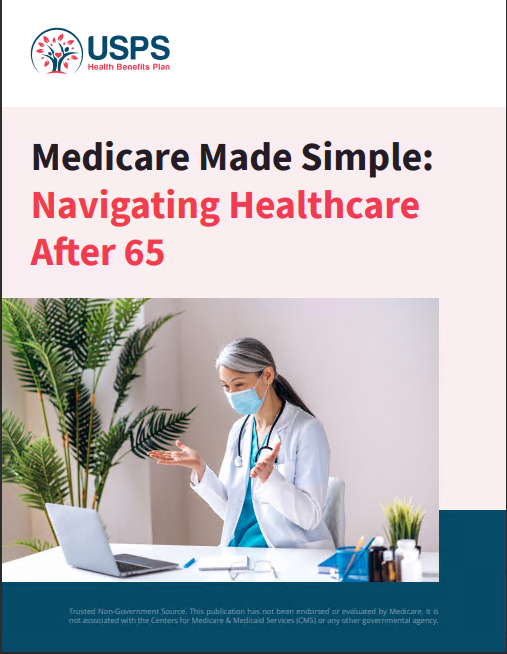Key Takeaways
-
Pairing Medicare with your PSHB plan can lead to better coverage and lower out-of-pocket costs, but only if you follow the proper rules and timelines.
-
Missteps in enrollment or misunderstanding how the two programs coordinate may result in penalties, coverage gaps, or higher medical expenses.
What Looks Simple Is Often More Complex
When you hear that combining Medicare with your Postal Service Health Benefits (PSHB) plan can save money and provide more coverage, it sounds like a win-win. And for many Postal Service retirees, that’s true. But behind that simplicity is a complex set of rules, timelines, and interactions that can either enhance your healthcare security or cause unnecessary confusion and cost.
Understanding how PSHB plans coordinate with Medicare—especially Parts A, B, and D—is essential. Starting in 2025, this coordination becomes even more important due to new PSHB requirements for certain annuitants and family members.
Who Must Enroll in Medicare Part B to Keep PSHB
Beginning January 1, 2025, specific Medicare-eligible PSHB annuitants and their covered family members are required to enroll in Medicare Part B to maintain PSHB coverage. If you fall into this category and don’t enroll, you could lose important parts of your health coverage.
You are required to enroll in Medicare Part B if:
-
You are entitled to Medicare Part A,
-
You are enrolled in a PSHB plan,
-
And you do not qualify for one of the official exceptions.
Exceptions Include:
-
You retired on or before January 1, 2025 and are not currently enrolled in Part B.
-
You are an employee aged 64 or older as of January 1, 2025.
-
You live outside the United States.
-
You are enrolled in Veterans Affairs (VA) or Indian Health Services programs.
Understanding these rules is critical. If you’re in a required category and fail to enroll in Part B when eligible, your PSHB coverage will be disrupted.
Why Medicare Part A Is the Easy Part
Most Postal Service retirees are automatically enrolled in Medicare Part A (hospital insurance) when they turn 65. Since Part A is usually premium-free due to your work history, you likely already have it or will get it without any action.
Part A helps cover:
-
Inpatient hospital stays
-
Skilled nursing facility care
-
Some home health care
-
Hospice care
Part A acts as your primary coverage if you are no longer actively working, while PSHB acts as your secondary. But this coordination depends on your employment status and enrollment in other Medicare parts.
Medicare Part B Is Where Most Mistakes Happen
Unlike Part A, Medicare Part B requires a monthly premium. That cost makes some retirees hesitate. However, starting in 2025, failure to enroll—if you’re required to—can jeopardize your PSHB plan.
-
Doctor visits
-
Outpatient care
-
Lab tests and imaging
-
Durable medical equipment
If you’re eligible and don’t enroll in Part B when required, you may face:
-
Loss of PSHB drug coverage tied to Medicare coordination
-
Lifetime late enrollment penalties (10% for each 12-month delay)
-
A long wait for the next General Enrollment Period
Timing matters. Most people become eligible for Medicare at age 65. Your Initial Enrollment Period lasts seven months: three months before your 65th birthday, the month of your birthday, and three months after.
Medicare Part D Drug Coverage Is Built In
If you are Medicare-eligible and enrolled in a PSHB plan, you will automatically receive Medicare Part D prescription drug coverage through an Employer Group Waiver Plan (EGWP). This integrated coverage includes:
-
A $2,000 annual cap on out-of-pocket drug costs in 2025
-
Access to a broad pharmacy network
-
A $35 per month cap on insulin
Importantly, if you opt out of the EGWP drug plan, you will lose your PSHB prescription drug coverage. Re-enrollment may not be possible until the next Open Season, and only under specific conditions.
PSHB Plans Coordinate Differently Based on Medicare Enrollment
How your PSHB plan works depends on whether you are enrolled in Medicare:
-
If you have both Medicare A and B: Your PSHB plan may waive deductibles, reduce coinsurance, and lower copayments.
-
If you only have Part A: Your PSHB plan acts as primary for outpatient care, often leading to higher out-of-pocket costs.
-
If you are not enrolled in Medicare at all: You will rely solely on PSHB, which could be more expensive, especially for major medical services.
Some PSHB plans offer premium incentives or reimbursements if you’re enrolled in Medicare Part B, so it’s worth comparing plan features before Open Season.
Medicare and PSHB Premiums: Two Separate Costs
Pairing PSHB with Medicare is not cost-free. You’ll pay a premium for both:
-
Medicare Part B premiums (standard is $185/month in 2025)
-
Your monthly PSHB premium (based on plan and enrollment tier)
That said, many retirees find that the combined cost offers better overall value. This is especially true when considering reduced out-of-pocket expenses, prescription drug coverage, and broader provider access.
Enrollment Windows and Timing Rules You Can’t Ignore
Enrollment in Medicare and PSHB doesn’t just happen automatically. You need to plan ahead.
For Medicare:
-
Initial Enrollment Period: 7 months around your 65th birthday.
-
General Enrollment Period: January 1 to March 31 (if you miss the initial window).
-
Special Enrollment Period (SEP): Available in limited cases, such as losing employer coverage.
For PSHB:
-
Open Season: Occurs every year from November to December.
-
Qualifying Life Events (QLEs): Such as retirement, marriage, or becoming Medicare-eligible, allow you to make mid-year changes.
Make sure your Medicare enrollment lines up with your PSHB enrollment. Late or mismatched timing can leave you without critical coverage.
The Out-of-Pocket Math: What You Might Pay in 2025
Here’s what you should budget for:
-
Part B premium: $185/month per person
-
PSHB premium: Varies by plan and tier, but monthly rates for Self Plus One or Self & Family can range from $240 to over $500
-
Out-of-pocket medical costs: With both Medicare and PSHB, deductibles and coinsurance may be significantly reduced
-
Prescription drug costs: Capped at $2,000 annually
Those who enroll in both programs often pay more in premiums but less when it comes to medical bills, hospital stays, and prescription medications.
PSHB and Medicare Don’t Always Cover the Same Services
Even when you combine both plans, there are areas that may still require attention:
-
Dental, vision, and hearing: Limited or no coverage under Medicare; optional with FEDVIP
-
Long-term care: Not covered by Medicare or PSHB
-
Foreign travel: Medicare usually doesn’t cover, but some PSHB plans do
-
Alternative therapies: Coverage varies widely
It’s important to review both Summary of Benefits documents to understand where each plan leads and where gaps may exist.
What Happens If You Skip Medicare Enrollment
If you’re in a group that is required to enroll in Medicare Part B and fail to do so, the impact can be significant:
-
Your PSHB plan will deny coverage for services Medicare would have paid
-
You will be responsible for 100% of the cost for those services
-
You could lose eligibility for PSHB-integrated drug coverage
-
Penalties for late Medicare enrollment will last for life
Avoiding enrollment might seem like a savings tactic, but in most cases, it creates higher long-term costs.
The Role of Open Season: Don’t Miss It
Open Season gives you a chance to:
-
Compare PSHB plans side-by-side
-
Check which plans work best with Medicare Parts A and B
-
Review Part B reimbursement incentives if available
-
Make sure your prescriptions are still covered
Even if you’re happy with your current plan, it’s smart to double-check the Annual Notice of Change (ANOC) letter to see if costs or coverage are changing.
Making Your Decision in 2025
Combining PSHB and Medicare in 2025 can be a strategic move, but it requires attention to detail. The rules, timelines, and cost structures aren’t always straightforward, and what looks beneficial on paper may not feel so clear once you’re dealing with real coverage situations.
The best approach is to review your eligibility, understand the enrollment windows, compare plans during Open Season, and reach out for expert help if you’re unsure.
Your Next Steps Toward Smart Coverage
Pairing PSHB with Medicare can absolutely work in your favor, but only if you follow the rules and understand how the programs coordinate. Missteps can be costly, while smart planning can deliver peace of mind, lower medical bills, and more comprehensive care.
If you’re unsure whether you need to enroll in Medicare Part B or want to understand how your PSHB plan interacts with Medicare, get in touch with a licensed agent listed on this website for clear, personalized advice before you make any decisions.











